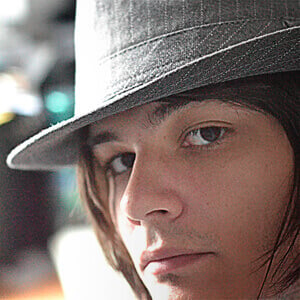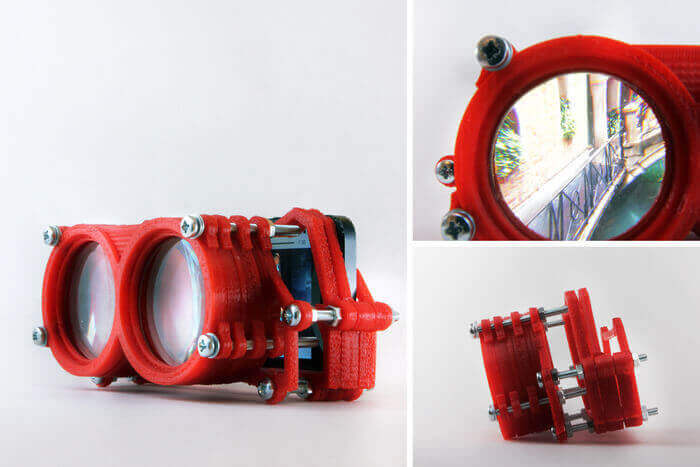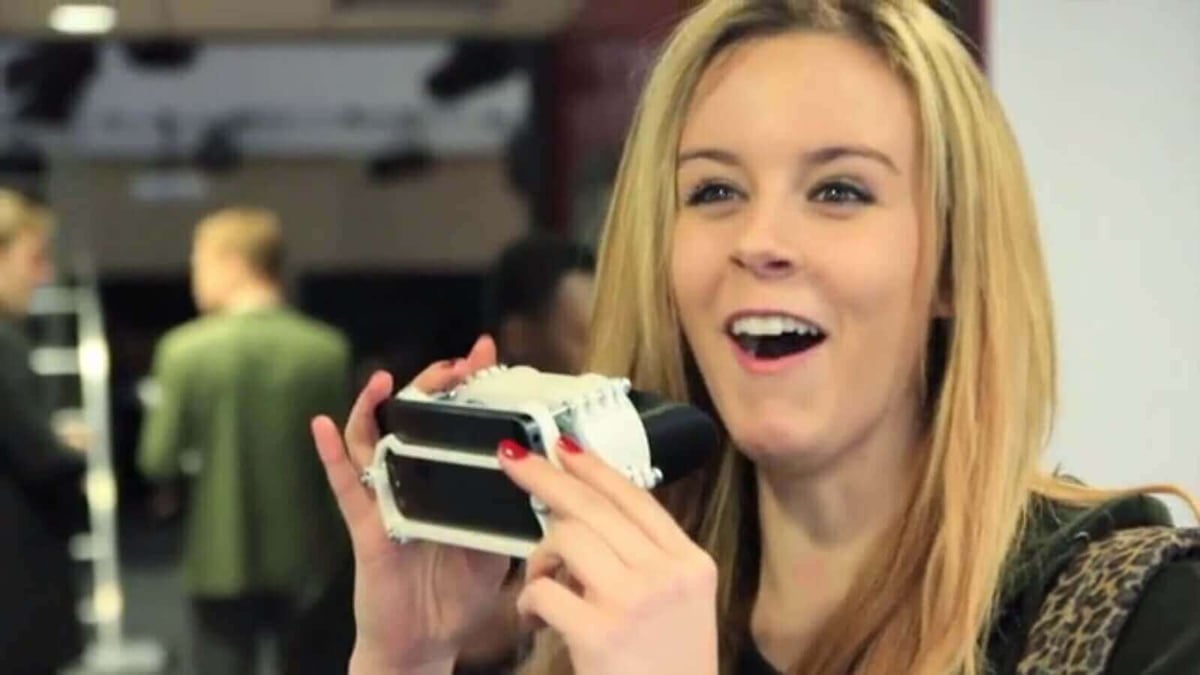Exclusive interview with Liviu Antoni about Altergaze, a 3D printed Smartphone VR headset successfully backed on Kickstarter in 2014.

Altergaze helped to popularise the concept of *affordable* virtual reality headsets long before Google Cardboard crashed the party. The concept is simple; a set of customisable, 3D printed goggles that could be adjusted to fit any smartphone, together with a vision of distribution through crowd-sourced manufacturing.
The Kickstarter campaign in May 2014 was a great success, with £31,988 in pledges towards a £25,000 goal. But that was only the beginning of the process for Altergaze, not just as a product but as a fledgling startup catapulted into the public eye. Co-founder and Managing Director Liviu Antoni speaks candidly with ALL3DP about lessons learned and future directions.
Q: What was the inspiration behind Altergaze? What was the development cycle before bringing it to Kickstarter?
We (Livia and co-founder Alexandra Stancu) were explaining to my father how basic and simple the principle behind VR visors really is. At one point I played to him a side by side split stereo clip on my phone to which he asked: ‘Why can’t you use the phone for VR then?’. So I did some digging, and at the time there wasn’t even a single smart phone VR headset out there. So we registered a few domain names and started building a prototype.
When vrAse and a couple of other VR headsets launched their Kickstarter campaigns at the beginning of September 2013, we realised we had to do something different to stand out.
Since we’ve already used 3D printing for building our prototype, we figured why not use 3D printing as the main method of manufacturing for our headsets? It will allow us to truly make a headset that is compatible with any smartphone (since the optics and position of the phone in relation to the lenses must be unique for every smartphone size) and it will also allow to quickly adapt to new technologies and upgrade our headsets over night (more or less).
So we’ve spent the following months making our headsets 3D print ready: no cleanup, fast printing times, easy to build etc.
Q: The Kickstarter campaign was a great success. Can you tell us about the major milestones since then?
We’ve spent a lot of time figuring out how to build a community that brings 3d printer owners together with VR enthusiasts and more importantly, how to make this process work in the long run.
Q: As with most successful campaigns, we’re guessing that the learning curve has been steep! With the benefit of hindsight, would you have done anything differently?
The learning curve really was indeed very steep.
This was a personal project that became a product that became a Kickstarter campaign that became a company and that, hopefully, will become a community.
There probably would have been some things we would have done differently if we were to start Altergaze now, with all the knowledge we gained. But the changes have to do with logistics, business and execution, not conceptual. So I guess the product itself and the Kickstarter campaign would be identical.
When you talk about a startup, there are really 2 stories: the company’s journey, and the founders’ journey. And because of that, because of the journey Alexandra and I had over these past 18 months, I can’t think of anything I would have done differently.
Q: How do you maintain your relationship with your backers? What’s the feedback loop been like?
What truly amazed us was their reaction after that first less than positive update.
It was around end of October 2014 when we realized we won’t be able to send all the rewards before Christmas. We were devastated. During that entire month, I don’t think either of us slept more than 4 hours for every 30 hours we stayed awake.
If you’ve never started a company before, you tend to estimate everything you can accomplish based on your own skills and experience. Being a consumer, a client, you know that if you need something you can always find it on Amazon or Ebay and get it delivered in less than 48 hours. This makes you (and us) underestimate the complexity of the logistics behind these huge companies that took years to evolve to what they are today.
So when we sent that first update letting our backers know that we are still waiting for our shipments to arrive (lenses, boxes, printers, filaments) we imagined an angry mob sharpening their pitchforks and lighting up their torches.
We were truly amazed of how many backers emailed us helpful suggestions and tips while other emailed us just to comfort us.
Q: One of your stated goals is to empower owners of 3D printers, so they can print and remix their own VR headsets?
That’s the plan: any 3D printer owner will be able to order lenses and will be able to use our website to create and design their own headsets or simply choose any of the pre-made designs – both in terms of unique design and smartphone compatibility. They of course can take this one step further and hack it even more.
Our platform and program is not yet launched.
Q: Altergaze promises a complete VR experience. What do you think of the current landscape for VR? Is it ready for mainstream adoption?
I think when the mainstream adoption starts is the moment when parts of the funds t intended for research and innovation are redirected towards marketing. So, in my opinion, prolonging the development and research stages will allow for better and more technologically advanced VR products out there.
Q: Your site talks about crafting bespoke brand experiences. Have you engaged with any major brands so far?
We had quite a few discussions, but being just a small startup, we were aware we might not be able to approach any high end client on our own. This is how our collaboration with Nexus was born.
Nexus are one of the most creative and versatile production companies and studios in London. They have recently launched their VR Studio which will concentrate on VR, 360 and immersive storytelling, currently in production on Google Spotlight Stories (among other exciting projects).
So the idea is that Nexus will be our production company – when we get approached to do a VR project they will be able to offer us both production and studio support, allowing us to concentrate on the creative or more technical aspects of the project. This of course cuts both ways as when Nexus gets a VR project we will be there to offer our expertise.
Given their track record in storytelling through their film division, coupled with the emotionally engaging digital interactive know-how of Nexus Interactive Arts and the 150 seat 3d studio, we think they will get some incredible results. They’ve recently expanded from a building that was home to over 110 artists to what looks like a studio office building that can easily support twice that crew size.
We couldn’t be happier to be part of the Nexus VR Studio at what seems to be a very exciting time.
Q: What’s been the most interesting/exciting use case you’ve seen for Altergaze?
We still believe the best use case for our headsets is in education. Our headsets combine product development, optics, stereoscopy, programming, 3D printing and VR, making the entire experience of ‘designing, 3D printing and assembling your own Altergaze’ a very educational one.
Q: How does the emergence of Google Cardboard impact on the future of Altergaze?
I think it’s a very positive one. Whether Google will venture more on the hardware manufacturing side or not, we don’t know. But what’s great about Google is that it provides a community for software tools and encourages apps development in the mobile space.
License: The text of "3D Printed VR Headset: Altergaze on Life after Kickstarter" by All3DP is licensed under a Creative Commons Attribution 4.0 International License.


